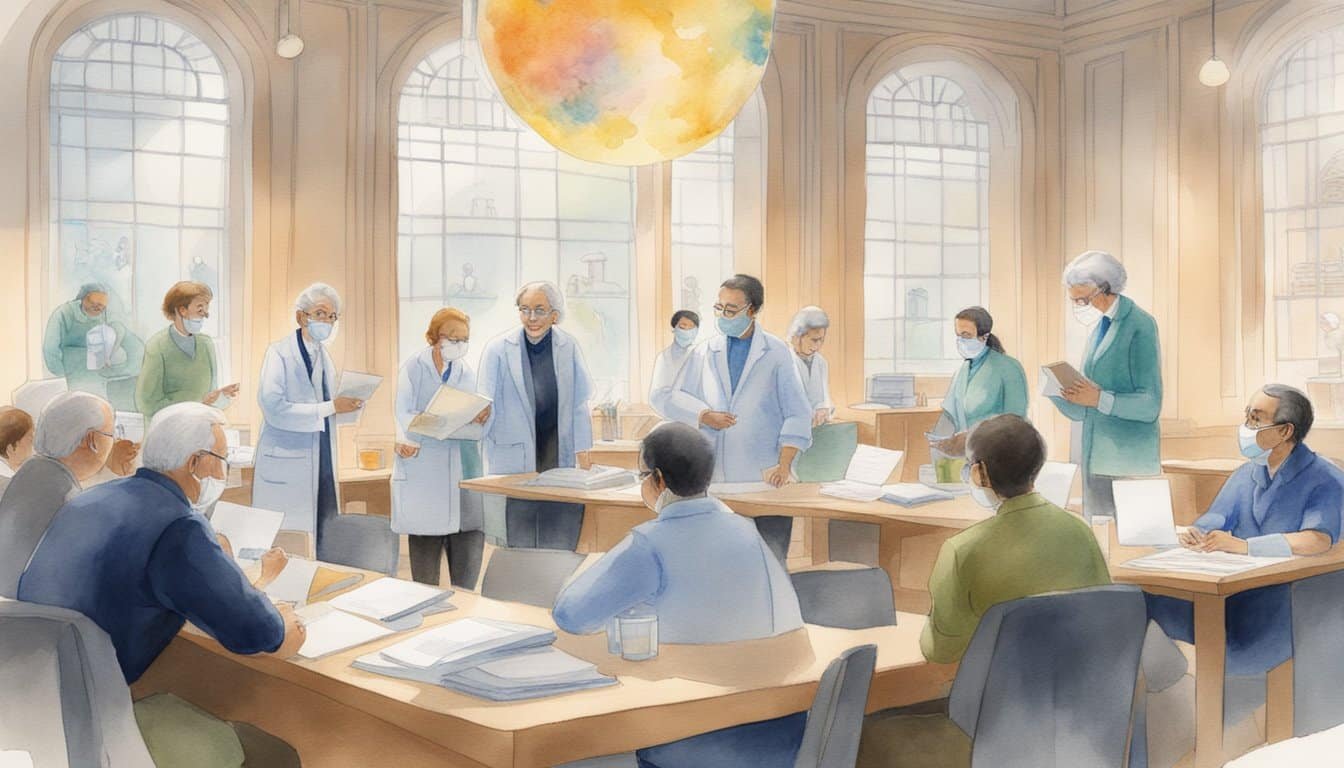CRISPR-Cas9: The Revolution in Genome Editing
The discovery of CRISPR-Cas9 revolutionized the way scientists work with DNA, enabling them to edit genes with a precision that was previously inconceivable. This genetic tool has not only earned its discoverers a Nobel Prize in Chemistry, but it has also opened up new frontiers in biology and medicine.
Discovery and Nobel Recognition
Jennifer A. Doudna and Emmanuelle Charpentier changed the trajectory of genetic research when they introduced the world to CRISPR-Cas9, also known as “genetic scissors.” Their groundbreaking paper presented a method to cut DNA at specific locations, allowing for precise genetic alterations. Their achievement was acknowledged by the Royal Swedish Academy of Sciences when both were awarded the Nobel Prize in Chemistry in 2020. This collaboration between the University of California, Berkeley and the Max Planck Unit for the Science of Pathogens exemplifies the global effort in advancing life sciences.
Mechanics of CRISPR-Cas9
The CRISPR-Cas9 system operates as a molecular scissor, designed to make exact cuts in DNA. Guided by RNA, the Cas9 protein finds the correct location on the DNA strand and creates a double-strand break. This allows scientists to remove, add, or replace DNA with incredible accuracy. It’s akin to a genetic word processor that can edit the genetic code, where CRISPR is the cursor and Cas9 is the scissors.
CRISPR Applications in Science and Medicine
From advancing basic research to ushering in new therapies, CRISPR-Cas9’s applications are vast. Scientists have employed this gene editor to modify organisms across the tree of life, including plants, animals, and microorganisms. Its implications for medicine are profound, with ongoing clinical trials for genetic disorders like sickle cell disease. As researchers continue to explore CRISPR-Cas9, they tackle challenges like cancer, inherited diseases, and even the recent COVID-19 pandemic. CRISPR technology stands to not only improve human health but also bolster our immune systems and enhance biotechnology as a whole.
Ethical and Practical Implications of CRISPR

The awarding of the Nobel Prize in Chemistry for the development of CRISPR-Cas9 technology marked a significant milestone. This gene-editing tool has vast potential, but alongside its practical applications, it raises ethical questions that society must address.
Impact on Agriculture and Environment
CRISPR’s precision makes it a revolutionary tool in agriculture, enabling the creation of crops resilient to pests and drought. Use of CRISPR-cas9 in developing such crops can lead to a reduction in chemical pesticides and bolster food security. However, there are concerns about the long-term ecological consequences and the potential effects on non-target species.
CRISPR in the Public Sphere
The conversation on CRISPR frequently enters the public domain, especially where the law intersects with biotechnology. The Broad Institute of MIT and Harvard plays a key role in disseminating information, offering both online-access subscriptions and print issues to facilitate a well-informed public dialogue.
Future Directions and Challenges
CRISPR technologies, described as “genetic scissors,” are poised to advance cancer therapies and treat a wide array of diseases. Yet, one must not overlook possible future challenges, including ethical concerns around “designer babies” and the equitable access to these technologies for all of humankind.
Access to CRISPR Technologies
While CRISPR offers precise gene-editing capabilities, the access to this “chemical tool” is uneven. Institutions and companies offer various access options, but there’s an ongoing debate concerning equitable distribution and the potential for a divide between those who have access to these molecular tools and those who do not.

